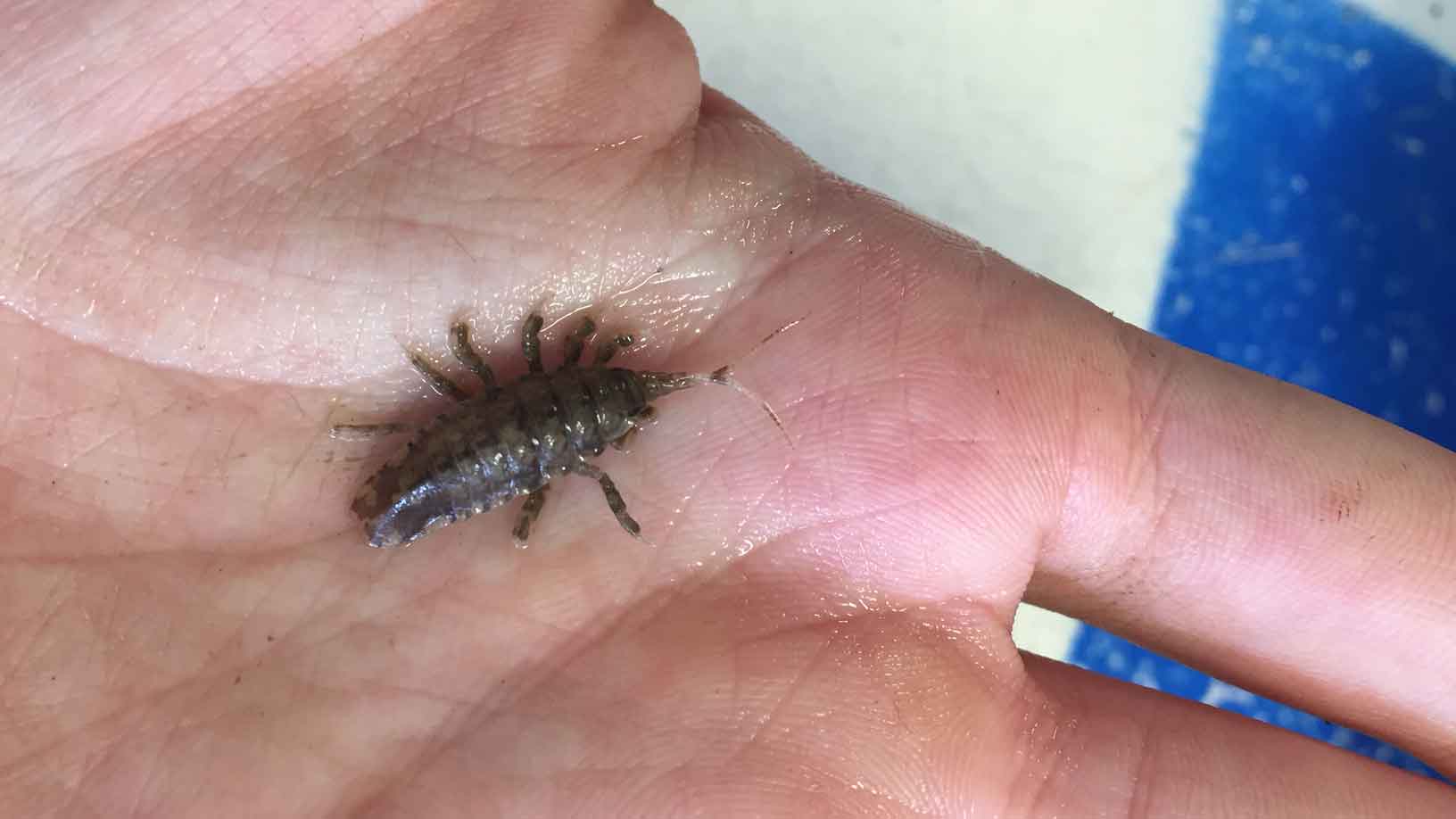 Max Size: <3 cm (1in)
Max Size: <3 cm (1in)
Habitat: Aquatic & terrestrial environments
Diet: Forages for algae, decaying organic matter; other species are parasitic or predatory
Common Species:
Metallic isopod (Idotea metallica)
Sea pill bug (Sphaeroma quadridentatum)
Gribble (Limnora lignorum)
Fun Facts:
- Isopoda is a wide and varied order of class Crustacea, with many aquatic and terrestrial species. Most are foragers but some are parasitic; one in particular consumes and “replaces” a fish’s tongue!
- The Gribble (L. lignorum) is an isopod commonly seen in the New York Harbor as it tunnels under the surface of submerged wood pilings and eats organisms that grow on the wood
- Many terrestrial isopods and some aquatics such as the sea pill bug (S. quadridentatum), or the sea pill bug, can contract into a ball or pill-shape as a defense mechanism when startled; this is called conglobation
- Isopod means “equal foot”, named because in most species, all pairs of legs are of nearly the same structure